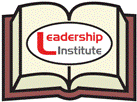Leadership Institute
Date of this Version
2004
Abstract
The overclaiming technique requires respondents to rate their familiarity with a list of general knowledge items (persons, places, things). Because 20% of the items are foils (i.e., do not exist), the response pattern can be analyzed with signal detection methods to yield the accuracy and bias scores for each respondent. In Study 1, the accuracy index showed strong associations with two standard IQ tests (β = .50–.59). Study 2 replicated the validity of the accuracy index with IQ and showed coherent associations with school grades, peer ratings, and self-ratings. Study 3 ensured that the validity of the accuracy index is invulnerable to a warning about foils. Study 4 showed that validity is maintained even when the ratings are completed at home. The discussion focuses on the advantages of this self-report approach over standard ability tests, namely, minimal stress, lack of time limit, or need for supervision, and flexibility of content.


Comments
Published in Intelligence 32 (2004), pp. 297–314; doi:10.1016/j.intell.2004.02.001 Copyright © 2004 Elsevier Inc. Used by permission. http://www.sciencedirect.com